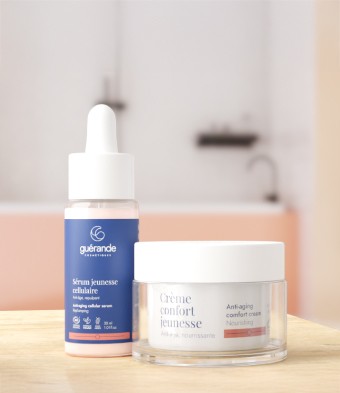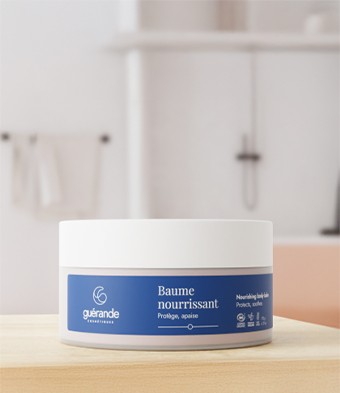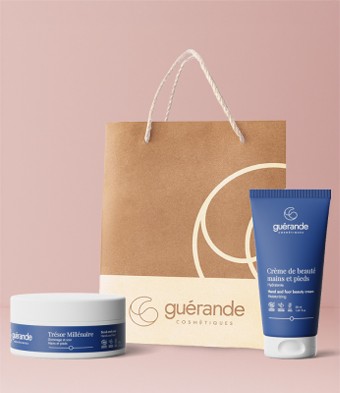The effectiveness of an organic face mask largely depends on how well the skin is prepared to receive it. Before application, it’s essential to free the epidermis of impurities and dead cells that could hinder the absorption of active ingredients. A thorough cleansing with a gentle cleanser—ideally one free of harsh surfactants—cleanses the skin without disrupting the hydrolipidic film. Then comes the key step: exfoliation. An enzymatic scrub or one with fine grains stimulates cellular renewal and refines skin texture, making the skin’s surface more receptive to the mask’s actives. For sensitive or reactive skin, a gentle enzymatic exfoliant is recommended, as it requires no rubbing.
Choosing the right organic face mask for your skin type
Not all organic face masks have the same properties, and their selection should be tailored to the specific needs of your skin. Dry skin will benefit from a mask rich in moisturizing and replenishing ingredients like marine polysaccharides and organic plant oils. In contrast, combination to oily skin will find balance with a purifying mask made with marine clay and algae extracts, which absorb excess sebum while remineralizing the epidermis. Skin prone to redness or discomfort should opt for a soothing, fragrance-free mask rich in Guérande Mother-Waters, known for their magnesium, copper, and zinc content, and their soothing and regenerating properties. Choosing the right mask means responding to the biological needs of your skin for optimal effectiveness.
Applying an organic face mask: using the right techniques
Applying an organic face mask is more than simply spreading it on the skin. It’s recommended to use a cosmetic brush or clean hands to apply the product evenly, avoiding the eye and lip areas, which are particularly sensitive. The recommended leave-on time varies by formula, but generally falls between 10 and 15 minutes. A longer application time doesn’t equal greater effectiveness—on the contrary, some absorbent ingredients could dry out the epidermis if left on too long.
The importance of rinsing to maximize the benefits of the organic face mask
Removing an organic face mask is a crucial step to ensure clean skin that is receptive to follow-up care. Rinsing with water that’s not too hot is ideal to remove residue without irritating the skin barrier. Clay-based textures may require a damp cloth or konjac sponge for gentle removal, offering a light exfoliating effect at the same time. Avoid very hot or hard water, which may disrupt the hydrolipidic film and cause tightness. To complete the ritual, a mineral-rich toning mist helps soothe the skin and restore its natural balance, promoting better absorption of the next treatment.

After the organic face mask: rebalance and lock in moisture
To prolong the benefits of an organic face mask, it’s essential to lock in moisture with an appropriate treatment. A remineralizing serum enriched with algae extracts and hyaluronic acid helps retain water within skin tissue, while an organic moisturizer reinforces the skin barrier. For mature skin, adding an antioxidant-rich treatment protects against oxidative stress and preserves a radiant complexion. This post-mask ritual ensures skin is deeply hydrated, nourished, soothed, and radiant—maximizing the effects of the mask applied beforehand.
Rhythm and frequency: when to apply an organic face mask?
The effectiveness of an organic face mask depends on regular use. A purifying treatment with marine clay is best used once or twice a week, so as not to disrupt sebum production. Hydrating and soothing masks can be used more frequently, especially during periods of fatigue or skin stress. For skin prone to blemishes, alternating between a purifying mask and a regenerating mask helps maintain a balanced, revitalized complexion. Depending on the season and the condition of your facial skin, adapting the frequency may be wise to preserve skin balance against external aggressors.
An organic skincare ritual for revitalized, radiant skin
The organic face mask is part of a complete skincare ritual that goes beyond its application. Each phase—preparation, application, and post-care—plays a key role in improving skin quality. By following these best practices and choosing a mask enriched with marine actives, the benefits for the epidermis are amplified. Remineralization, hydration, radiance—these treatments draw from the wealth of natural, marine, and organic cosmetics.









 Find an institute
Find an institute Offer a treatment
Offer a treatment
 Find an institute
Find an institute Offer a treatment
Offer a treatment














